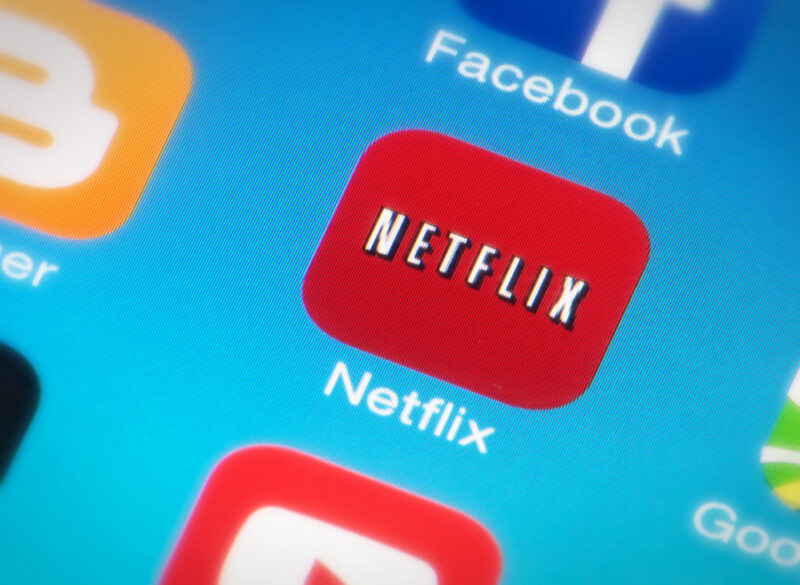In 2020, Netflix credited its record-breaking growth to the current coronavirus pandemic. Today is a different story; the company is placing the blame on the pandemic for the worst first quarter they have seen in eight years.
During the first three months of this year, Netflix missed both its forecast, and the forecast of Wall Street analysts, by millions of new subscribers to its streaming service. The second quarter does not look any better. Netflix announced a revised number for new subscribers. The analysis had projected close to 4.5 million new subscribers. Netflix is predicting the subscriber base to increase by just 1 million. This announcement sent its share price plunging by as much as 13 percent on the day.
Warnings Were Given
Netflix has been sending out signals for months, warning that growth would slow considerably as more people began to emerge from their COVID-induced hibernation. However, few thought the drop in customers would be as great as announced. A year ago, first-quarter growth was the strongest in the company’s history, gaining nearly 16 million new customers. Even as the year wore on, the pace remained strong.
Reed Hastings, executive Chair and co-CEO noted that the company had 10 smooth years, but, he went on to say, “It’s wobbly right now.”
Based on an average of 6.29 new subscribers in the first quarter, the company forecast growth of 6 million. Netflix added 3.98 million. This number of new subscribers to the streaming service was the weakest since 2013 when the new account additions totaled about 3 million customers.
If the forecast offered up by the company holds, it will mark the worst quarterly stretch since the early days of the popular streaming service.
The company lays the blame on a “COVID pull-forward” effect, suggesting the pandemic accelerated the company’s growth in 2010 as so many people were forced to stay home, and they all needed something to watch other than that offered by their cable service. As a result of the surge in subscriptions, and now the relaxation of quarantine, the company’s results are taking a hit.
As well as a relaxation of lockdowns, a lack of new material also contributed to the slump in the subscriber base. Although there were a few popular shows available, fresh releases were far less after mid-January.
Production Problems
Productions problems resulting from the impact of COVID saw many key titles getting pushed further back into the year. Although production problems began in 2020 due to pandemic-related issues, Netflix was able to keep true to its release schedule for the first few months of the year as several projects were already completed. However, the bulk of programming that was scheduled for last year was either canceled outright or set back.
The notion that competition had something to do with the quarter’s results has been rejected by the company, noting that growth was not only impacted in the United States but globally. U.S. competitors Disney+, HBO Max, and Peacock are not active in many parts of the world so are not yet, at least, seen as competitors.
However, Netflix is facing competition, and some of the competitor’s services are less expensive than Netflix, which increased prices in the U.S. market in October 2020. Although production has resumed in all but a couple of locations, that will not have a positive impact until later in the year. The companies slate in this quarter is also light with Michael Nathanson of MoffetNathanson saying, “There is not a lot to watch this current quarter.”
Europe is a Bright Spot for Netflix
The answer to the challenge has not changed, produce more shows. The company has budgeted $17 billion on programming for 2021, a substantial increase from the $12.5 billion spent last year, which was down from the $14.8 billion spent in 2019. The company is investing more outside the U.S. as this is where the bulk of new customers are coming from.
Europe has been, and continues to be, a bright spot for Netflix. Last year, 1.8 million new customers were added there, as well as the Middle East and Africa.
Even with a decline in growth, the company has never been in a stronger financial position. The company reported net income for the year of $1.71 billion, double that of last year. During the first quarter, the company generated a free cash flow of over $690 million. Undoubtedly, some of this is due to limited production, however, it does reflect a strengthening in the foundation.
WeInvests is a financial portal-based research agency. We do our utmost best to offer reliable and unbiased information about crypto, finance, trading and stocks. However, we do not offer financial advice and users should always carry out their own research.
Read More













